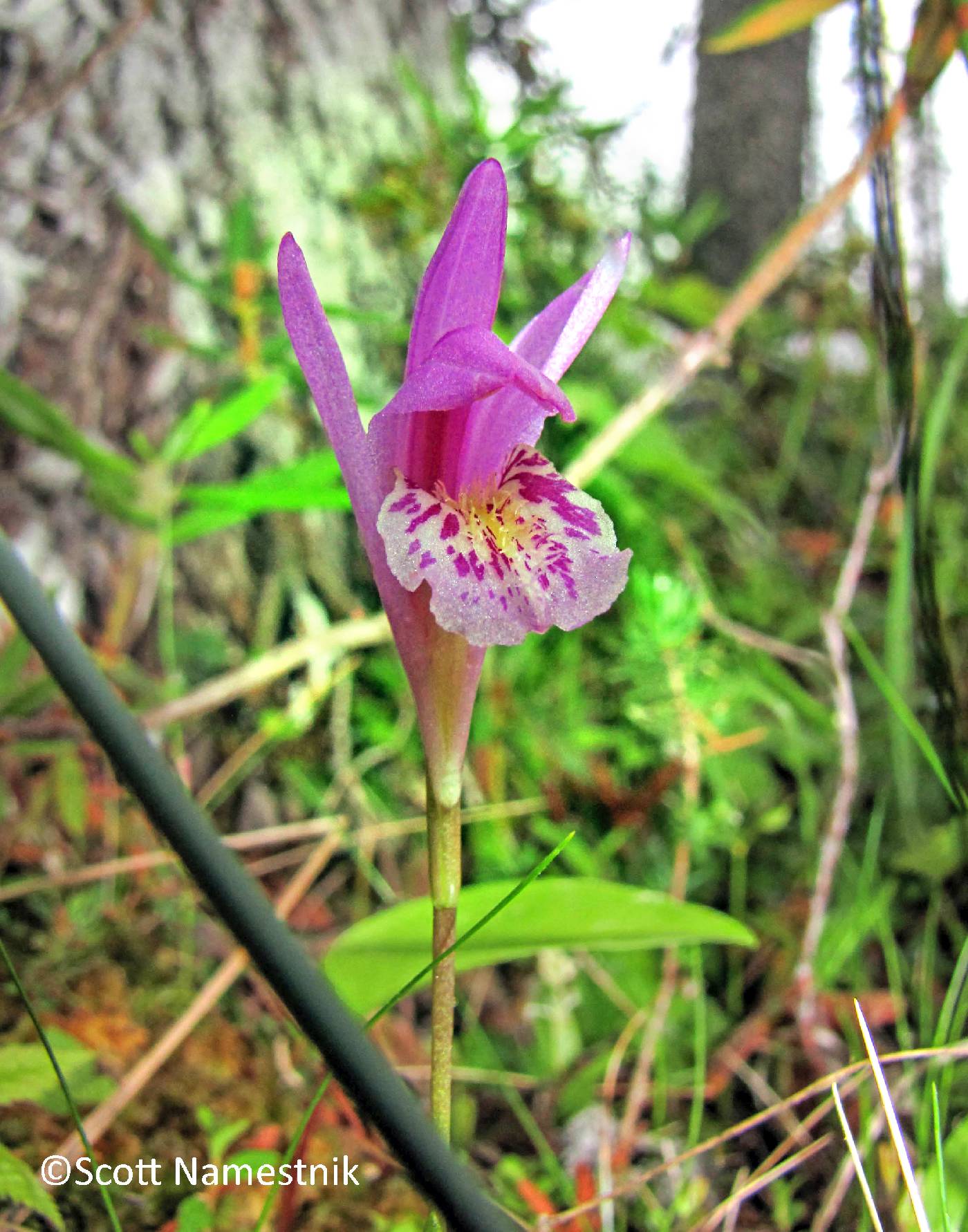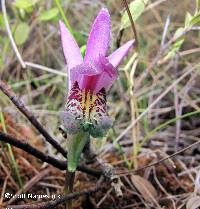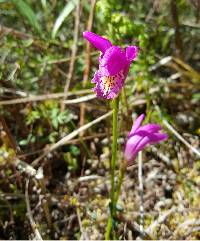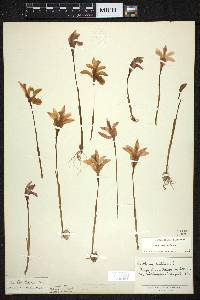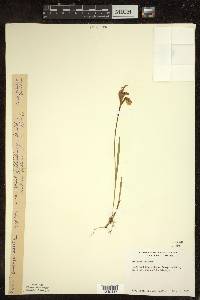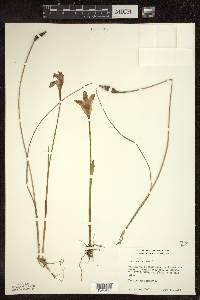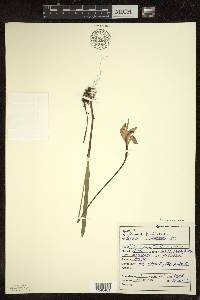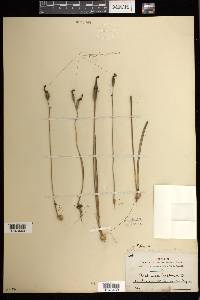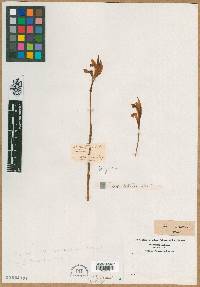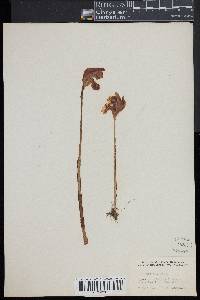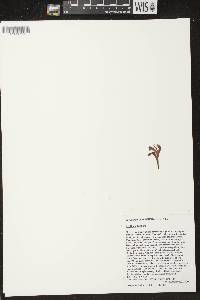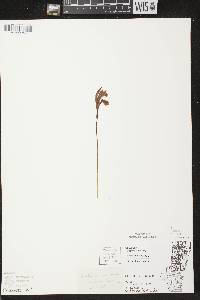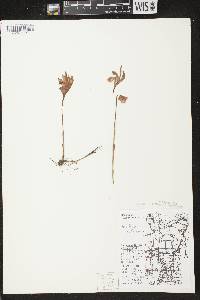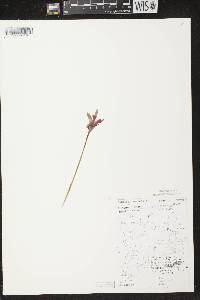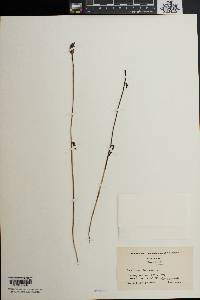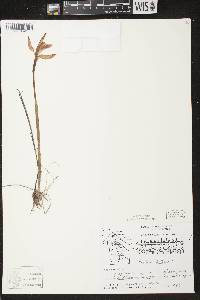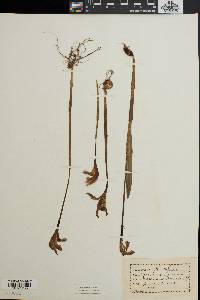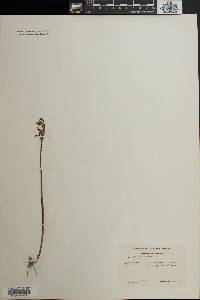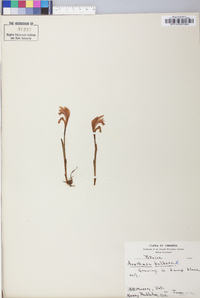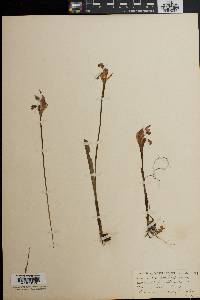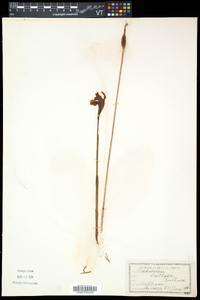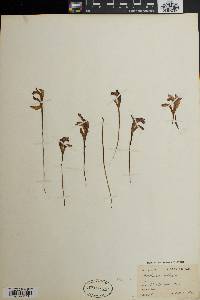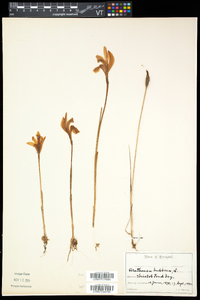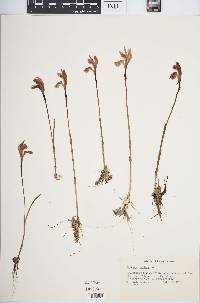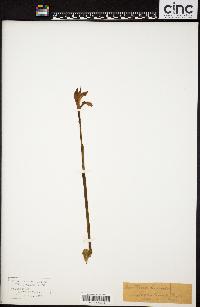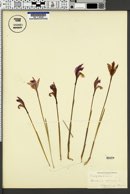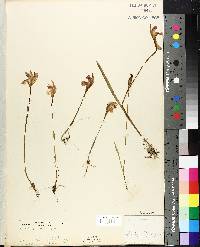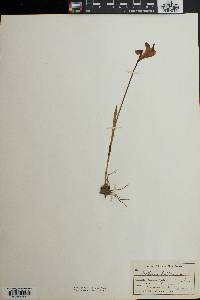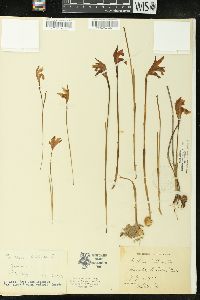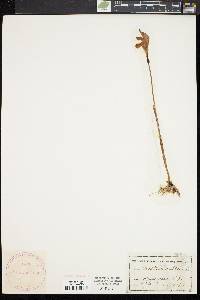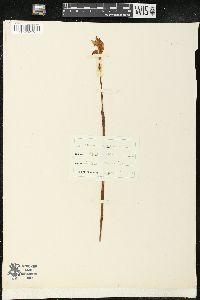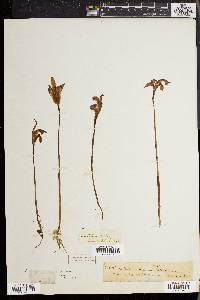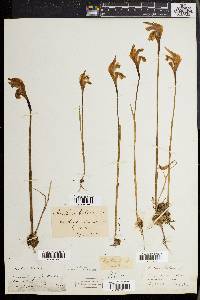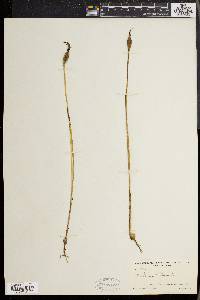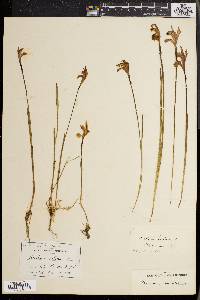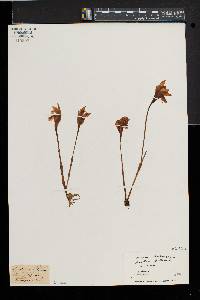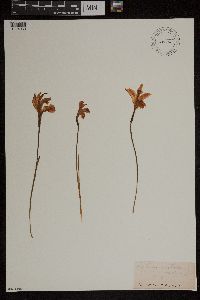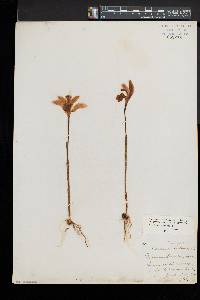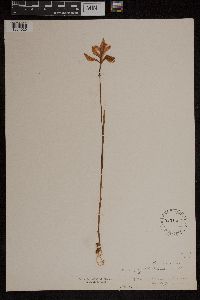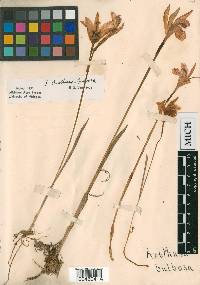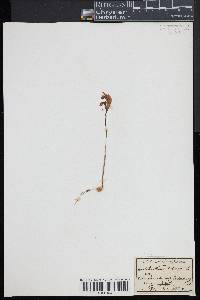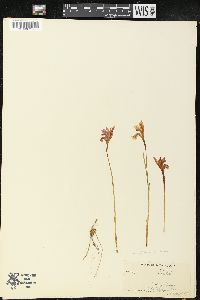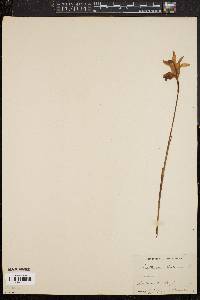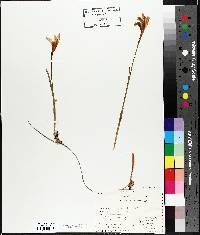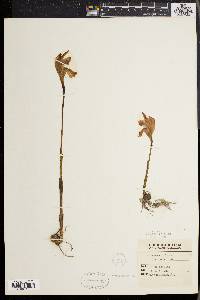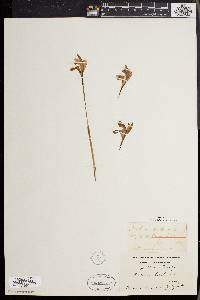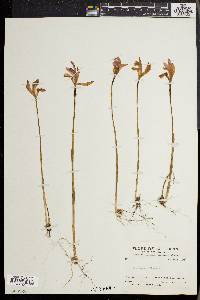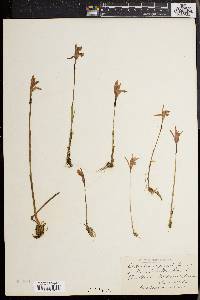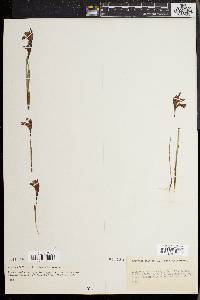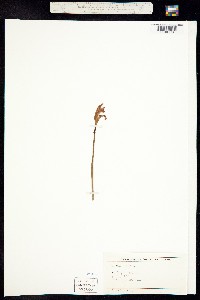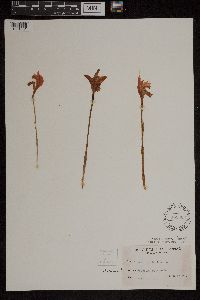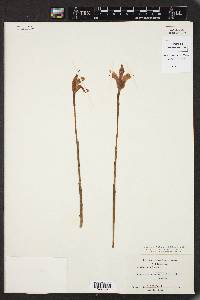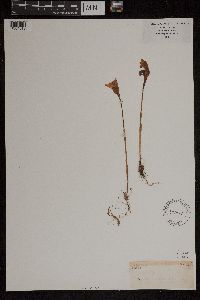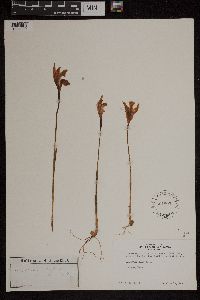
|
|
|
|
Family: Orchidaceae
Dragon's-Mouth
[Arethusa bulbosa f. albiflora E.L.Rand & Redfield] |
Plants 2-40 cm. Leaves: blade 5-23 cm × 3-12 mm. Inflorescences: floral bracts 2, inconspicuous. Flowers pink to magenta, rarely white or bluish, gaping, large; sepals erect, narrowly oblanceolate to narrowly oblong, 20-55 × 3-9 mm; petals arcuate, 23-49 × 4-10 mm; lip obovate to oblong, arcuate to reflexed near middle, often obscurely 3-lobed, 19-35 ×10-19 mm; disc with crest of yellow lamellae and fleshy processes. Capsules erect, ovoid to ellipsoid, 15-25 mm. 2n = 40. Flowering Jun--Jul. Sphagnum bogs, coniferous swamps, calcareous treed to open fens, and moist, acid, sandy meadows; 0--1100 m; Man., N.B., Nfld. and Labr. (Nfld.), N.S., Ont., P.E.I., Que., Sask.; Conn., Del., Ind., Maine, Md., Mass., Mich., Minn., N.H., N.J., N.Y., N.C., Ohio, Pa., R.I., S.C., Tenn., Vt., W.Va., Wis. The occurrence of Arethusa bulbosa in Cook County, Illinois (F. Swink and G. S. Wilhelm 1994), and in Maryland are unconfirmed.
Perennial herb 10 - 40 cm tall Inflorescence: of one (rarely two), erect, terminal flower subtended by a very small (2 - 4 mm long) bract. Sepals: three, erect, petal-like, bright pink to rose-purple, 3 - 5.5 cm long, 0.5 - 1 cm wide, inversely lance-shaped to narrowly oblong or linear with blunt tips. Petals: three, lip reflexed or curved outward from middle, upper two erect like sepals but curving forward beyond middle to arch over column. The lateral petals are solid pink to rose-magenta, 2 - 3 cm long, 3 - 7 mm wide, inversely lance-shaped, and non-toothed. Lip magenta along edges, 2 - 3.5 cm long, 1 - 2 mm wide, oblong to inversely egg-shaped, irregularly round-toothed with very wavy edges along expanded tip. The flat surface of the lip (floor) is typically pale yellow with dark purple blotching, though some have a white lip and obscure blotching. Central area of lip with raised lengthwise ridge bearing conspicuous bright yellow, fleshy, bristly projections. Fruit: a single, erect, 1.5 - 3 cm long, egg-shaped capsule with three raised lengthwise ridges, and an erect, long, woody beak (remnant column) with a curved end. Flowering stem: single, erect, hairless, lacking leaves, but with one to several slightly inflated sheaths (perhaps 5 cm long). This leafless structure terminated by flowers is called a scape and technically is not a true stem. Root system: a single, below ground, bulbous, 1 cm long, 0.5 cm wide, bulb-like structure (corm, technically a shoot or stem) with a few spreading, fleshy yet fibrous, slender true roots. Leaf: solitary, emerging from scape sheath after flowering, 4 - 10 cm long, 0.4 - 1 cm wide, grasslike, lance-shaped, non-toothed. Flower: deep pink to magenta, rather large (3 - 6 cm tall), showy, bilaterally symmetric with one petal formed into a lip, but lacking a spur. The reproductive parts of stamens, stigma and style are fused into a column above the inferior ovary. Similar species: Arethusa bulbosa is probably most similar to Pogonia ophioglossoides, but that species has a conspicuous (3 - 3.5 cm long) leaf-like bract below the flower, a heavily fringed lip petal, more spreading and horizontal lateral sepals, and a single, obvious, 5 - 6 cm long, egg-shaped to elliptic leaf near the middle of the stem at flowering time. Flowering: late May to July Habitat and ecology: Very rare, sometimes in wet meadows, also reported from wet swales in the dune region of Indiana, though primarily a plant of deep sunny sphagnum bogs, which are incredibly rare in the Chicago Region. This orchid prefers to be near open water, and where more common in the north it can be seen growing on logs or in tufts of sedge surrounded by open water, or even in mucky marl fens in wet tracts with peaty material or on isolated sphagnum hummocks. Occurence in the Chicago region: native Notes: This strikingly beautiful orchid commonly known as dragon's mouth, is the only species in the genus Arethusa. Though older floras may report a species in Japan, they are in error since that species is really in the genus Eleorchis. This rare orchid has only been reported twice in the entire state of Illinois, and no known populations remain in either Illinois or Indiana. A now destroyed historic location of this orchid in Gary, Indiana was described as a deep-shaded bog with pitcher plant (Sarracenia purpurea), poison sumac (Toxicodendron vernix ), rose pogonia (Pogonia ophioglossoides) and bog bean (Menyanthes trifoliata) (Homoya 1993). This orchid was thought to be extirpated in the Chicago Region until it was found in a bog in Walworth Co., Wisconsin in 1986. Etymology: Arethusa is named after the mythical Greek character Arethusa, a nymph who was transformed into a spring or hidden underground river by the Greek goddess Artemis. Bulbosarefers to the bulbous corms. Author: The Field Museum Scape 1-3 dm; lf at maturity nearly equaling the scape, 2-4 mm wide; fls 3-6 cm high, subtended by a pair of small bracts; sep and pet lanceolate, magenta; lip pinkish-white, spotted and streaked with purple and yellow, about as long as the lateral pet. Sphagnum-bogs and swampy meadows, usually rare; Nf. to Minn., s. to N.J. and n. Ind., and in the mts. to N.C. and S.C. May, June Gleason, Henry A. & Cronquist, Arthur J. 1991. Manual of vascular plants of northeastern United States and adjacent Canada. lxxv + 910 pp. ©The New York Botanical Garden. All rights reserved. Used by permission. From Flora of Indiana (1940) by Charles C. Deam An extremely rare plant found in sphagnum in bogs. In addition to the counties shown on the map it has been reported from Carroll and Starke Counties. It must now be very rare or almost extinct in the state. Indiana Coefficient of Conservatism: C = 10 Wetland Indicator Status: OBL |

